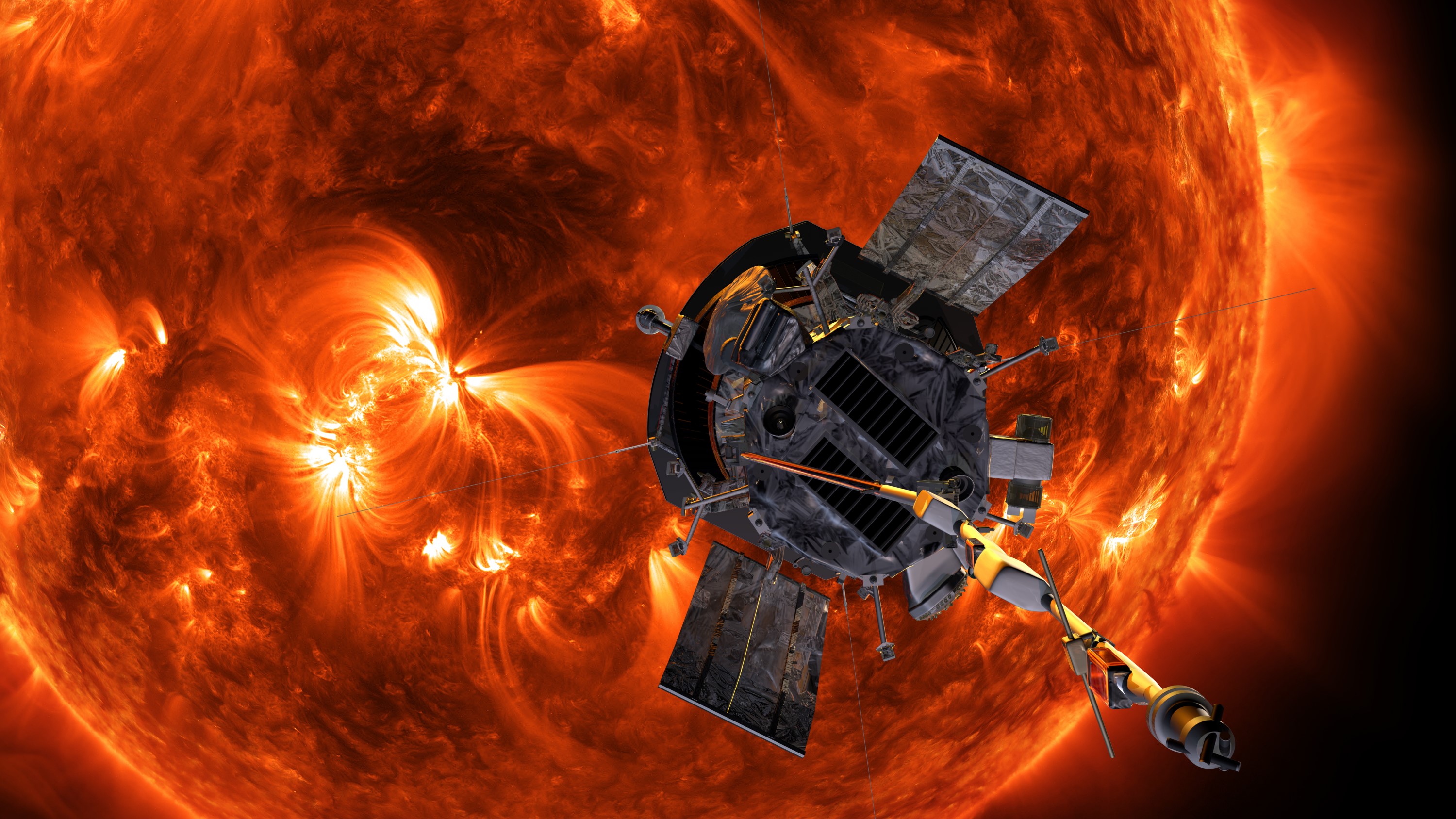Hypervelocity dust impacts cause plasma explosions on Parker Solar Probe

The fastest spacecraft ever flown, NASA's Parker Solar Probe, regularly experiences high-speed collisions with dust particles that create explosions of plasma, a new study finds.
Launched in 2018, the Parker Solar Probe is NASA's latest and most ambitious effort to investigate the sun. To date, it has gotten closer to the sun than any other mission; its equipment has operated at the hottest temperatures of any spacecraft; and the probe is the fastest human-made object ever.
However, the extraordinary speed at which the Parker Solar Probe flies — about 447,000 mph (720,000 kph) during its closest approaches to the sun — means that running into even a tiny grain of dust can trigger explosions, which could make the probe the most sand-blasted spacecraft ever.
Related: NASA's Parker Solar Probe captures stunning Venus photo
Read more: What's inside the sun? A star tour from the inside out

"The Parker Solar Probe has been struck by dust tens of thousands of times," study lead author David Malaspina, a space plasma physicist at the University of Colorado, Boulder, told Space.com. "During its ninth orbit of the sun, of 24 total planned orbits, there were periods where the Parker Solar Probe was struck by a hypervelocity dust grain every 12 seconds on average."
To learn more about the kind of havoc these collisions might wreak, the researchers analyzed data gathered by the probe's antennas and magnetic field sensors. The result is the most complete picture yet of how hypervelocity dust impacts — ones that occur at more than 6,700 mph (10,780 km/h) — may damage a spacecraft and disturb its operations.
While flying near the sun, the Parker Solar Probe barrels through the densest region of the zodiacal cloud. This thick, pancake-shaped cluster of dust, which extends throughout the solar system, is made up of tiny dust grains from asteroids and comets.
Breaking space news, the latest updates on rocket launches, skywatching events and more!
As the spacecraft hurtles through this cloud, thousands of dust grains about 2 to 20 microns wide strike it at hypervelocity, generating explosions that last less than a thousandth of a second. In comparison, the average human hair is about 100 microns wide.
Upon impact, the dust grains and the impacted spacecraft surface get heated so much that they vaporize and then fragment into electrons and ions, forming plasma, the same state of matter that makes up stars and lightning.
"While most dust impacts cause only small effects, a few are very high energy, creating the debris and dense plasma clouds that we focused on in this research," Malaspina said. "We identified about 250 of these very high-energy impacts during the first eight orbits of Parker Solar Probe around the sun."
The largest of these collisions also generate clouds of debris that slowly expand away from the probe.
"Dust impact plasma clouds have been observed on spacecraft since the 1980s, when Voyager passed through the ring plane of Saturn, but no impact plasma cloud observed prior to this has been dense enough to cause such clearly measurable effects," Malaspina said.
As much as dust is pummeling the Parker Space Probe, it remains operational, Malaspina noted. "Most of the dust grains that strike the spacecraft are very small," Malaspina noted. "While this very efficiently sandblasts the spacecraft surface, the risk of encountering a dust grain large enough to cause a catastrophic failure remains low."
This new data can help scientists tinker with spacecraft designs to better protect them from hypervelocity impacts, as well as the resulting plasma and debris, Malaspina said.
For example, researchers may want "to carefully consider the fragmentation properties of exterior materials under hypervelocity impacts," he explained. "This is particularly true for missions where uninterrupted star camera navigation is important, or where electromagnetic attraction of spacecraft debris to spacecraft surfaces may be a concern."
This research is also helping scientists map the structure and density of the interplanetary dust cloud near the sun, "which has never been done with direct spacecraft measurements," Malaspina said. "This can inform updated models of this environment and drive more accurate predictions of dust impact danger on any future missions."
In addition, these findings could lead to new insights into space weather around the sun. For example, the measurements allowed the team to study how these plasma explosions interacted with the solar wind, the stream of particles flowing from the sun. This information, in turn, can shed light on how larger amounts of plasma, such as those found in the upper atmospheres of Venus and Mars, are swept away by the solar wind, Malaspina said.
The scientists will detail their findings Nov. 11 at the annual meeting of the American Physical Society's division of plasma physics in Pittsburgh. They have also submitted their work to the Astrophysical Journal.
Follow us on Twitter @Spacedotcom or Facebook.

Charles Q. Choi is a contributing writer for Space.com and Live Science. He covers all things human origins and astronomy as well as physics, animals and general science topics. Charles has a Master of Arts degree from the University of Missouri-Columbia, School of Journalism and a Bachelor of Arts degree from the University of South Florida. Charles has visited every continent on Earth, drinking rancid yak butter tea in Lhasa, snorkeling with sea lions in the Galapagos and even climbing an iceberg in Antarctica. Visit him at http://www.sciwriter.us
